SMS Dresden (1908) Revell 1:350
Hi, I want to present you my pride and joy, my SMS Dresden (1908) Revell 1:350.
From wikipedia:
"SMS Dresden ("His Majesty's Ship Dresden")[a] was a German light cruiser built for the Kaiserliche Marine (Imperial Navy), the lead ship of her class. She was laid down at the Blohm & Voss shipyard in Hamburg in 1906, launched in October 1907, and completed in November 1908. Her entrance into service was delayed by accidents during sea trials, including a collision with another vessel that necessitated major repairs. Like the preceding Königsberg-class cruisers upon which her design was based, Dresden was armed with ten 10.5 cm (4.1 in) SK L/40 guns guns and two torpedo tubes.
Dresden spent much of her career overseas. After commissioning, she visited the United States in 1909 during the Hudson-Fulton Celebration, before returning to Germany to serve in the reconnaissance force of the High Seas Fleet for three years. In 1913, she was assigned to the Mediterranean Division. She was then sent to the Caribbean to protect German nationals during the Mexican Revolution. In mid-1914, she carried the former dictator Victoriano Huerta to Jamaica, where the British had granted him asylum. She was due to return to Germany in July 1914, but was prevented by the outbreak of World War I from doing so. At the onset of hostilities, Dresden operated as a commerce raider in South American waters in the Atlantic, then moved to the Pacific Ocean in September and joined Maximilian von Spee's East Asia Squadron.
Dresden saw action in the Battle of Coronel in November, where she engaged the British cruiser HMS Glasgow, and at the Battle of the Falkland Islands in December, where she was the only German warship to escape destruction. She eluded her British pursuers for several more months, until she put into Robinson Crusoe Island in March 1915. Her engines were worn out and she had almost no coal left for her boilers, so the ship's captain contacted the local Chilean authorities to have Dresden interned. She was trapped by British cruisers, including her old opponent Glasgow. The British violated Chilean neutrality and opened fire on the ship in the Battle of Más a Tierra. The Germans scuttled Dresden and the majority of the crew escaped to be interned in Chile for the duration of the war. The wreck remains in the harbor; several artifacts, including her bell and compass, have been returned to Germany."
This ship is still down there in our Juan Fernández archipielago Robinson Crusoe island, and in 2015 there were a lot of ceremonies and news articles about the 100 anniversary of the sinking. Still grenade holes are in nearby rock structures around the town.
About the building: this is the 2014 Emdem-Dresden Revell twin kit, which brings both ships in one box. The quality is excellent and almost no putty was required given that the fit is really great. I used also wooden Pontos deck (which includes awesome anchor chains), both Eduard Dresden PE kits, hand made brass & wire masts (always make your own metal masts, that's a rule) and some Tamiya 1:350 sailors. The paint is Vallejo and the weathering was done with Artel oleum paints.
Here, the naked lady, only plastic and PE. Such a beauty!
Took me a bit more than a year to build her and everything was a big success but the rigging. I'm thinking nowadays in rebuilding the whole rigging with lycra Mig thread.
I really hope you like. I love this one. Except for the rigging.
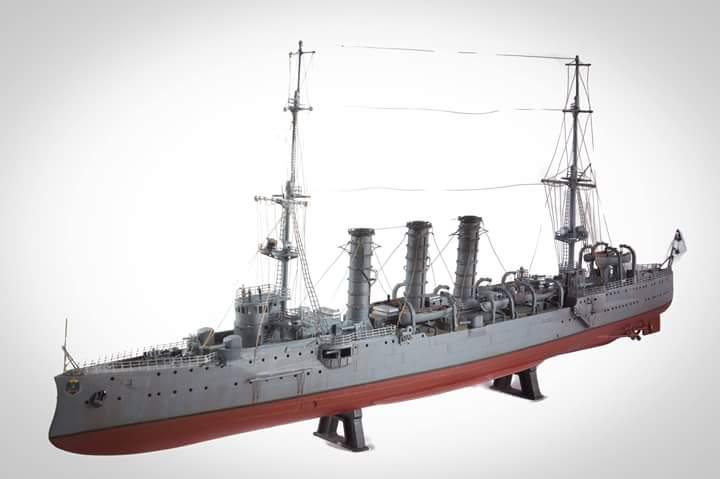
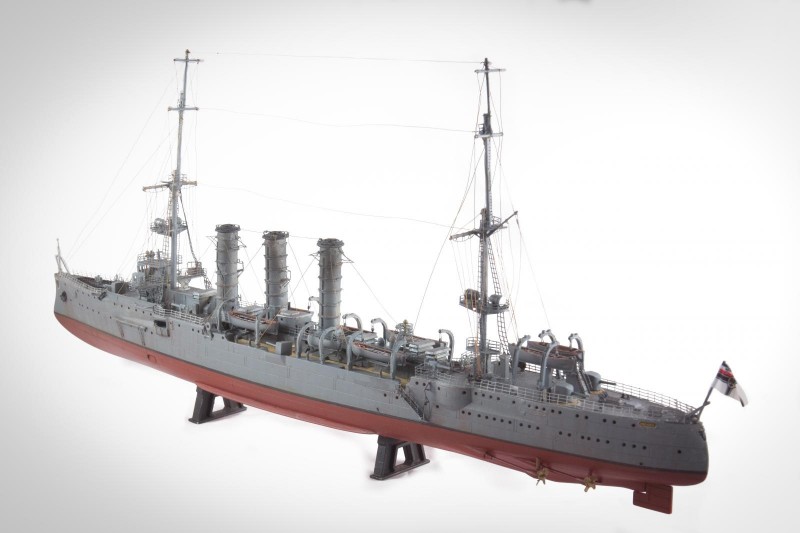
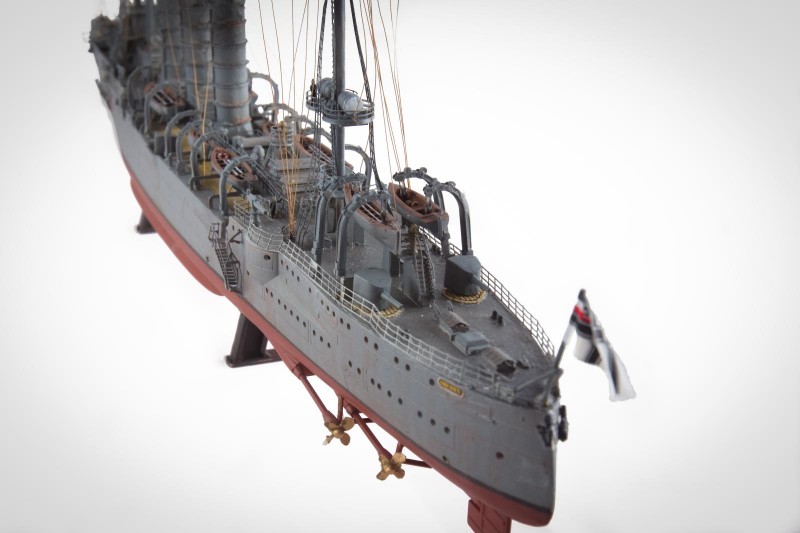



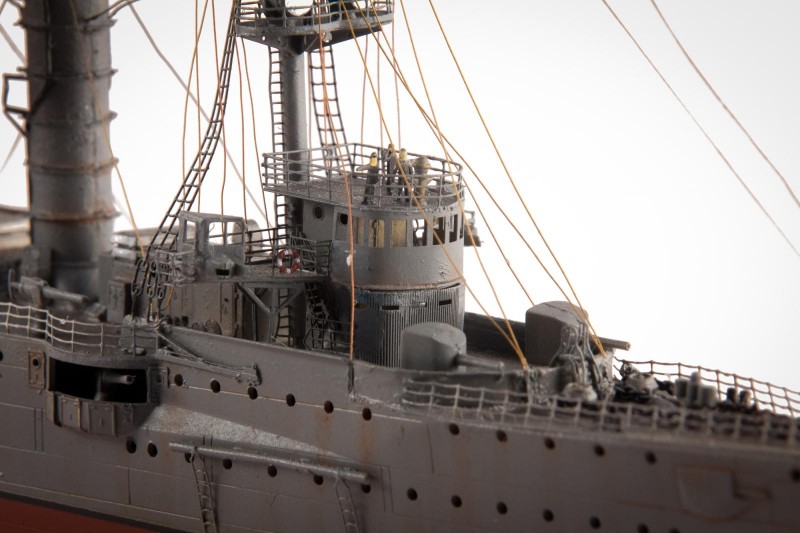
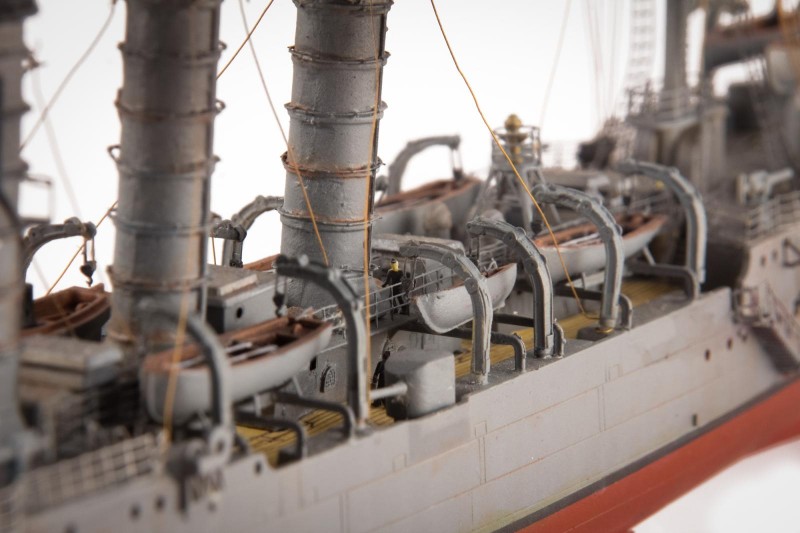
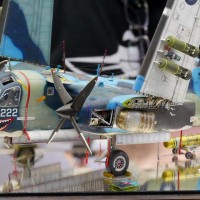
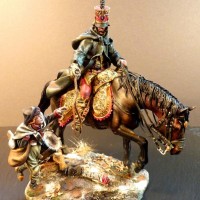
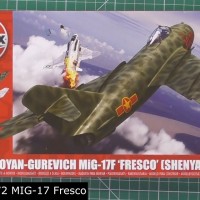

Nice work . Good to see one built.
Beautiful work, and an interesting history, too. Thanks for posting.
Wow, Alfredo, top to bottom this is a fantastic presentation. You are a true artisan and historian. Kudos!
Lovey model! First one I've ever seen built, though I was aware there was a kit. Revell was really innovative, I now appreciate. Plus, to me they have a certain charm, and they remind me of my youth. The aftermarket now available makes a real difference in the outcome, looks like. I also can't imagine making my own metal masts. Now that's impressive.
Actually, is very easy and fun. I bought .7, .5 and .3mm brass wire from a jewelry shop. Everything above that is done with regular galvanized wire (I`m not worrying about galvanizing. Electrons come and go but no material wear has been found). You can solder with a soldering iron and tin, is very easy. Or, easier but not that strong, glue everything with CA. Why is a rule: the kit plastic masts ALWAYS bend under the rigging tension.
The kit ship is pretty but look like toy. The PE does most of the difference. But these are TWO Eduard kits, several several pieces very small and hard to handle.
https://www.eduard.com/store/Eduard/Photo-etched-parts/Photo-etched-set/Ships/1-350/SMS-Emden-part-1-1-350.html?lang=1
https://www.eduard.com/store/Eduard/Photo-etched-parts/Photo-etched-set/Ships/1-350/SMS-Emden-part-2-1-350.html?lang=1
This is the deck
https://www.bnamodelworld.com/model-ships-boats-deck-sets-pontos-models-pon-35031wd1?zenid=8bbda8a92bd22ed11ab7dc252774d691
Very nice. A fascinating look at ship evolution!
Alfredo, it is easy to see why you are proud of this. It is a very well made miniature. Plus, your narrative with her history was very interesting.
Bravo!
A excellent build !
I can only but echo the sentiments of the above responses...especially yours (about dreading the rigging - that aspect alone has always kept my ship-building to a minimum).
Your model turned out wonderfully.
Last night I was fixing broken models, and decided to do the rigging all again. Is not to the height of the rest of the built. Also, I won't use again cooper wire but lycra thread.
As if once wasn't enough, you rigged the entire ship TWICE..!? If you haven't as yet tried that stuff called E-Z Line (elastic, easy to adhere and in various thicknesses), you may find it a tad easier to work with for such things.
Not yet. I need to redo the rigging, anyway. I bought Mig rigging thread. Is like E-Z but cheaper (and come in less meters presentation) http://www.migjimenez.com/es/83-aparejos
Beautiful. I take it this is her look after August 1914, when she was repainted for war?
Yes, it is. I understand that while hiding in our fjords, was painted to look like our chilean cruisers, but is essencially the same gray.
There a couple of great stories about that. The ship was helped by german settlers, who supplied the ship and took the boilers caps to be fixed at Puerto Montt. In the Quintapeu fjord, it is said that the ship thrown overboard a big chest, sealed, who contained Mexico's treasure, kept safe onboard from Pancho Villa.
After scuttling, the crew was kept interned in Quiriquina island, fro where lieutenant Canaris escaped using his language skills. Canaris rose to be the admiral head of Abwehr, Germany Naval Intelligence, from where fell in disgrace after operation Valkyria and was sent to be hanged by Hitler.
Alfredo, great stories, especially the connection with the (then) Mexican revolution. The story has it all, lost treasure, Wilem Canaris, Huerta. I had no idea. And a pretty ship, too.
And don't forget this ship was in Coronel, the first sea battle the British lost in centuries (poor Cradock, it wasn't his fault), and in Falklands, were Von Spee met his end along all his maginificient fleet but this ship.
This summer I was in Montevideo, were lies the SMS Graf Spee 10 meter telemeter. I was right acrooss the street and couldn't find it. I was very angry! They paint it gray while I was looking for a red artifact, and got confused. Saw it later in Google Maps. Also, read a great SMS Dresden history book and in Punta Arenas were at Max Von Spee monument. Was a Spee summer.
Nice modeling Alfredo.
Very nice work on this historical piece.
Thank you for sharing these images.
Hello Alfredo,
Incredible what you did with this Revell Model. My compliments.
Appreciate the full story of the ship. That makes it all so much more interesting. Thanks for sharing this jewel with us.
Highest Regards, Dirk / The Netherlands.
I'm very honored by all your kind comments.
Aifredo, Top job and good story, all the best. Marsh.